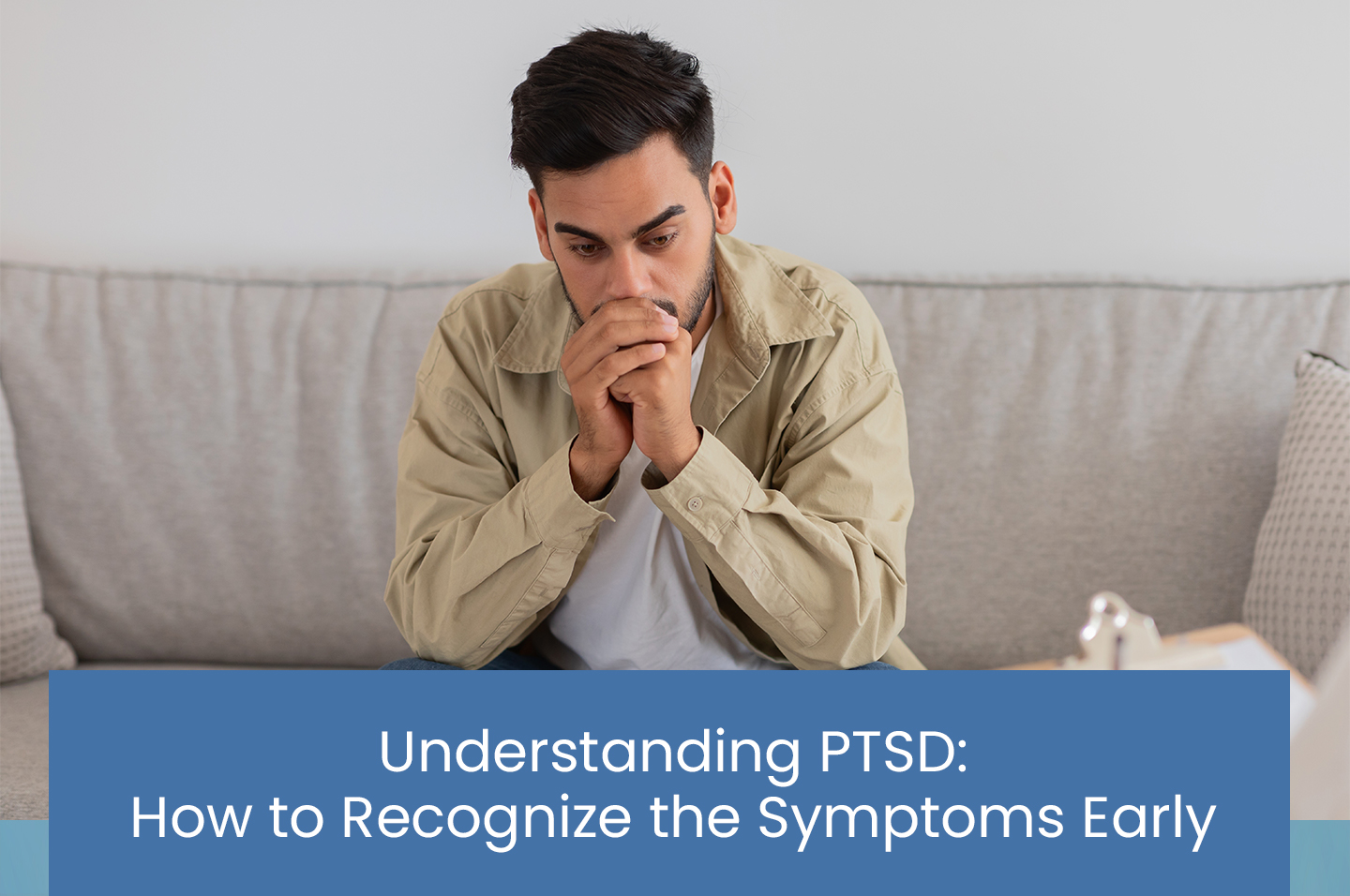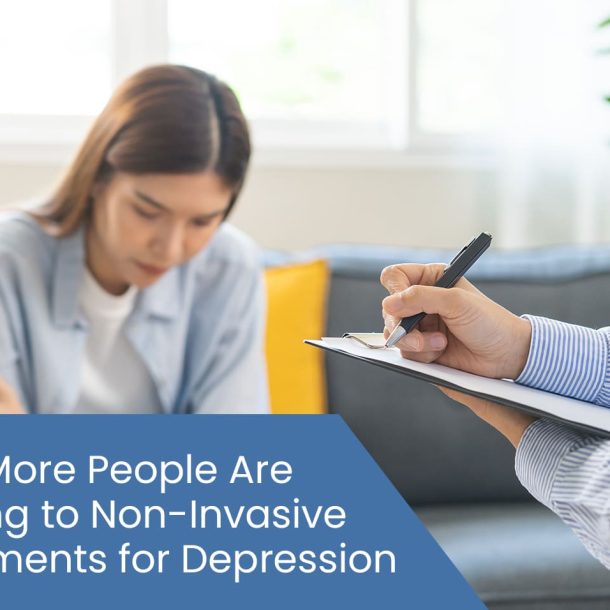
Understanding PTSD: How to Recognize the Symptoms Early
- Home /
- Understanding PTSD: How to Recognize the Symptoms Early

Trauma doesn’t always arrive with a single event. Sometimes, trauma accumulates; other times, it occurs abruptly, then recedes, but its effects linger. A person may seem fine on the surface, yet internally, their system continues to respond as if danger remains.
Post-traumatic stress disorder (PTSD) is one possible outcome of that lingering state of alert. It’s far more common than people realize, and often, it’s misunderstood. While it has long been linked with combat, PTSD can follow anything from medical trauma to living through a natural disaster. The causes may differ, but with healing outcomes that are remarkably achievable, the path toward recovery shares a striking thread.
Trauma Can Take Different Forms
PTSD is a mental health disorder that arises following exposure to a psychologically overwhelming event. The threat may have been direct, observed, or even relayed through someone close. The body’s stress response system becomes activated, and for some people, that response is then not easily deactivated.
Trauma might involve physical harm, but it doesn’t have to. Psychological or emotional disruptions can be equally destabilizing. There’s a chance that someone may develop symptoms after an assault or an accident, but they might also develop PTSD after persistent neglect, witnessing harm, or feeling unsafe over time. What matters isn’t only what happened, but also how the individual experienced it, and what available support was available afterwards.
Who is affected by PTSD?
There’s no fixed profile. PTSD can show up in anybody. For instance, first responders, your next-door neighbour, survivors of domestic violence, people affected by discrimination, adolescents, and healthcare workers can all develop PTSD.
The risk increases when multiple factors converge, including personal or family history of trauma, substance use problems, minimal access to social support, or the presence of guilt or shame related to the event.
PTSD Symptoms
PTSD symptoms don’t always appear right away. Some show up months or even years later. For diagnosis, symptoms need to last at least a month and fall into four types.
- Re-experiencing symptoms: Flashbacks, intrusive memories, nightmares, any of these can rush in without warning. For some, a scent, a sound, or a glance is enough to send the body into full alert. The mind may know it’s not happening again, but the body doesn’t always get the memo.
- Avoidance symptoms: You might find yourself dodging certain streets or skipping entire conversations. You might stop going to places you once loved. This isn’t due to a sudden change in your interests, but because these locations, people, or activities resurface negative emotions that are associated with the traumatic event.
- Arousal and reactivity symptoms: There’s a jumpiness that won’t settle down. Sleep gets lighter, and patience wears thin. Even when nothing seems “wrong”, your whole nervous system stays tense, alert, and eventually wears out. This constant alertness and energy drain starts spilling into your work, friendships, and how you navigate daily life.
- Cognition and mood symptoms: PTSD can make you feel like you can’t move past the event, like some part of you got stuck there. You question yourself. You pull back from loved ones around you. Guilt often shows up and remains persistent and uninvited. Often, people with PTSD also experience memory and attention difficulties, as well as anxious and depressive symptoms.
Why Early Recognition Matters
Mental health awareness is essential. When PTSD symptoms go untreated, they can dig in deeper. They may lead to substance use problems, chronic illness, depression, loss of employment, or social withdrawal. In Canada, around 8% of adults report moderate-to-severe PTSD symptoms. That number climbs to 10% for women and hits 14% among those aged 18–24.
Pathways Toward Recovery
There’s no single way to heal. However, some treatment approaches have helped many. Cognitive behavioural therapy (CBT) is one psychotherapy option that often relies on exposure and belief restructuring.
If the trauma still feels raw, exposure therapy lets you engage with reminders of the event gradually and intentionally to ensure the emotional impact of the situation begins to fade. Cognitive restructuring helps you untangle beliefs like “I should’ve done more” or “It was my fault”, and question where these thoughts came from originally. The goal of psychotherapy isn’t to erase the trauma, but to loosen its hold on your thoughts, emotions, and daily living.
A Closer Look at the Brain
In many cases, PTSD will manifest as the result of disruption in the brain’s frontal regions, areas that handle executive functioning, emotion regulation, and mood. When these circuits misfire, safe things can feel dangerous. Emotions get stuck, and cognition gets foggy.
However, new treatment approaches have emerged thanks to major advancements in brain imaging research that don’t rely on talk therapy. Instead, they work to modulate the brain non-invasively. This includes Magnetic Resonance Therapy (MeRT), a brain-based treatment guided by each person’s unique patterns.
What MeRT Offers
MeRT uses a quantitative electroencephalogram (qEEG) to map brainwave activity. Atypical patterns are identified, then magnetic pulses are applied based on what’s found.
When your brainwave patterns restore to their normal functioning, an improvement in sleep, cognitive processing, and emotional stability is frequently reported. MeRT doesn’t override who you are; it helps your brain reconnect with the parts that got thrown off course.
Think of it like an orchestra: if one section is out of sync, the entire performance suffers. MeRT doesn’t rewrite the musical score, but it helps the musicians find their rhythm again.
Why MeRT Is Different
Unlike standard brain stimulation, MeRT is tailored. That means fewer side effects and, often, more noticeable changes over time. People describe it as subtle at first, then steady. Although improvements may take a few weeks, they tend to remain incredibly stable.
MeRT is not meant to replace talk therapy. However, it has helped countless people living with PTSD move forward when talking alone didn’t get them far enough. It’s also ideal for patients who have dealt with unwanted side effects from pharmacotherapy.
When Symptoms Don’t Fade
If you’ve found yourself skipping things you used to enjoy, reacting much more than you used to, or are feeling detached from your own emotions, it’s worth asking: Is unresolved trauma part of the picture?
PTSD can make you feel like you can’t move past the past, but that doesn’t mean progress isn’t possible. Some symptoms may seem normal by now; others might’ve been brushed off. However, if they keep interfering, they’re worth your attention.
Taking the First Step
Trauma recovery isn’t about erasing your memories, nor is it about reverting to a previous version of yourself. It’s a process through which safety is reestablished, flexibility is regained, and your sense of self is restored. Although PTSD may lead to a narrowed sense of possibility, recovery is often observed when the right interventions are in place.
At Neurosync Brain Centre, the process is designed to be clear and individualized. Initial consultations are used to determine whether MeRT may be appropriate. Insurance details, scheduling, and clinical expectations are all reviewed with transparency.
If you’re considering MeRT, you can reach us at +1-365-799-8438 or contact us online. Recovery may take time, but it’s not rare. The right conditions can make change not only possible, but likely. The past may have shaped you, but it doesn’t have to define what happens next.
Working Hours
Email: neurosyncbtc@outlook.com
Woodbridge. ON. L4L 1A6

